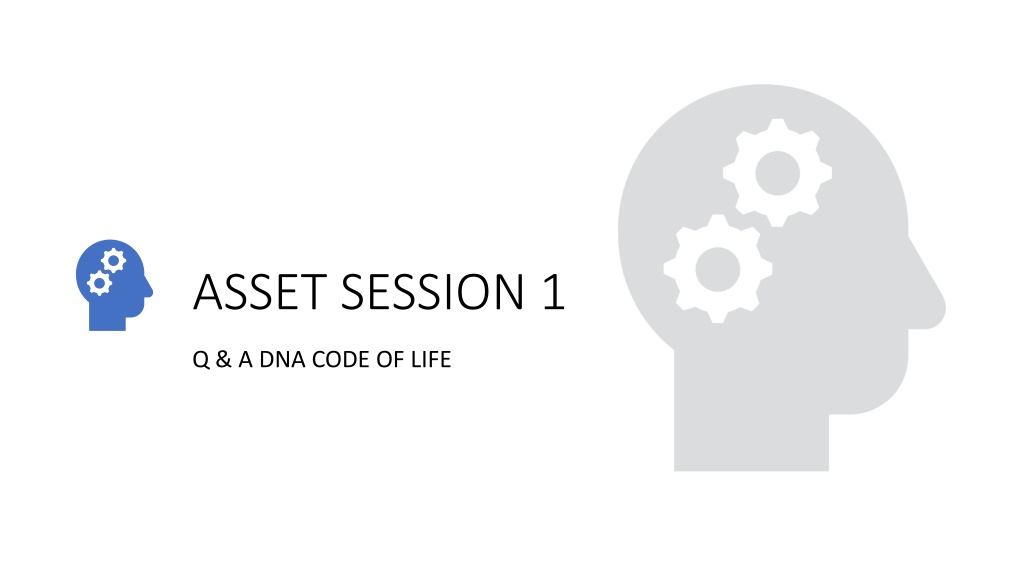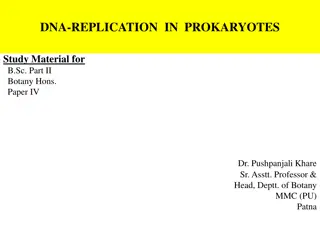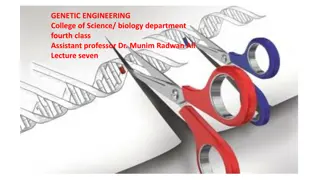Understanding DNA: Basics, Analysis, and Protein Synthesis
Explore the world of DNA starting from the fundamentals of nucleotides and base pairs, to analyzing DNA samples for forensic purposes, and understanding protein synthesis stages. Engage with visual aids and questions to test and expand your knowledge about the code of life.
Download Presentation

Please find below an Image/Link to download the presentation.
The content on the website is provided AS IS for your information and personal use only. It may not be sold, licensed, or shared on other websites without obtaining consent from the author. Download presentation by click this link. If you encounter any issues during the download, it is possible that the publisher has removed the file from their server.
E N D
Presentation Transcript
ASSET SESSION 1 Q & A DNA CODE OF LIFE
Question 1: Basic knowledge 1.1 Draw and label a nucleotide of DNA with the base adenine. (6) 1.2 Give the biological term for each of the following: 1. The monomers of DNA and RNA. 2. The shape of a DNA molecule. 3. The bonds holding base pairs together in the DNA molecule. 4. The molecule that carries the coded message from DNA to the ribosomes. 5. The base in RNA which replaces Thymine.
Question 2: Reading, analyzing, thinking. When a thief broke into a car, he cut his arm on the broken glass. Scientists extracted DNA from the blood found on the broken glass. They analysed this DNA sample and compared it to the DNA from three suspects, P, Q and R. The table below shows the results of the analysis for the DNA from each source. Read the text first. Then analyse the diagram what is is showing? Read all the questions and look at the mark allocations. Q5.1 and 5.2 are straight forward knowledge and comprehension q. Q 5.3 asks for reasons to back up your answer in Q 5.2 use ONLY what you can see. Q5.4 disadvantages is similar to reasons against see PPT but answers must be given in full sentences.
Question 3 (in your revision book it is Question 2) : A lot of reading and analyzing the diagram and questions and then thinking about what the questions are asking before answering Look at the text and diagram. Then identify what stage of protein synthesis is being shown. Then identify everything in the diagram. ONLY THEN go on to the Questions.
Read ALL the questions first. What is the instruction for each question? Look at the mark allocations each time. Q 2.1 2.3 are straightforward. Q 2.4 asks for DNA but you only have mRNA so you need to work backwards Q 2.5 needs real careful reading as they give you tRNA but the drawing has mRNA. Q 2.6 is a straightforward description use bulleted points























